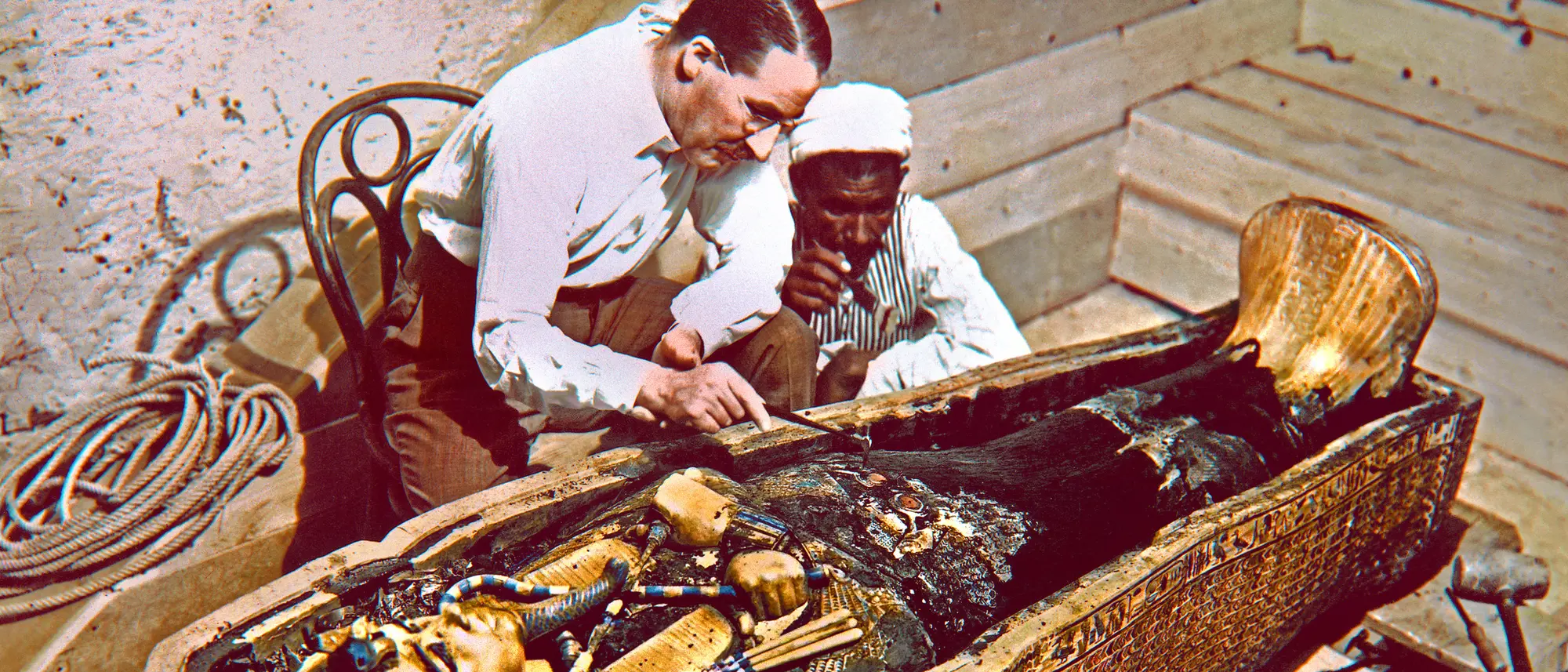The Discovery of Tutankhamun’s Tomb: A Glimpse into History
The discovery of Tutankhamun’s tomb is one of the most significant archaeological finds of the 20th century. This discovery not only revolutionized archaeology but also shed new light on the life and times of the young pharaoh. In this article, we explore the fascinating story behind the discovery, the secrets of the tomb, and its impact on modern archaeology.
The Discovery
Howard Carter and Lord Carnarvon
The discovery of Tutankhamun’s tomb is inseparably linked to British archaeologist Howard Carter. Supported by his patron, Lord Carnarvon, Carter dedicated years to searching for the tomb in the Valley of the Kings. On November 4, 1922, Carter’s team uncovered the sealed steps leading to the young pharaoh’s tomb. This marked the beginning of an archaeological sensation.
The Moment of Discovery
On November 26, 1922, Carter opened the tomb and peered into the darkness with a candle. When asked if he could see anything, he famously replied, “Yes, wonderful things.” Before him lay a treasure chamber filled with unimaginable riches that had remained untouched for over 3,000 years.
The Treasures of the Tomb
The Golden Sarcophagus
One of the most impressive artifacts was Tutankhamun’s golden sarcophagus, housing the embalmed body of the pharaoh. The sarcophagus is a masterpiece of ancient Egyptian art, demonstrating the craftsmanship and wealth of the era.
The Golden Throne and Other Artifacts
Besides the sarcophagus, the tomb contained numerous artifacts including the famous golden throne, jewelry, weapons, and everyday objects, offering insights into life at the pharaoh’s court. These treasures are now displayed at the Egyptian Museum in Cairo and attract visitors from all over the world.
The Importance of the Discovery
Insights into Ancient Egypt
Tutankhamun’s tomb discovery greatly expanded understanding of ancient Egyptian culture and history. The well-preserved artifacts provide valuable information on religious practices, art, and daily life in ancient Egypt.
Impact on Archaeology
The find had a lasting influence on archaeology, increasing global interest in Egyptian history and setting new standards for the preservation and documentation of archaeological finds.
The Legend of the Curse
The Pharaoh’s Curse
The tomb’s discovery is also linked to the legend of the “Pharaoh’s Curse,” which claims that anyone who opens the tomb will be punished by a curse. This myth was fueled by the sudden death of Lord Carnarvon shortly after the tomb’s opening.
The Truth Behind the Myth
Scientists have debunked the “curse” as a myth born of coincidence and sensationalism. Nevertheless, the curse story remains a fascinating part of Tutankhamun’s tale.
Conclusion
The discovery of Tutankhamun’s tomb remains one of the greatest archaeological discoveries in history. It revolutionized the understanding of ancient Egyptian culture and permanently changed how archaeological research is conducted. Whether you are a history enthusiast or simply curious, the story of Tutankhamun offers a captivating journey into the past.
Related Sites:
Valley of the Kings
Deir el-Medina
Valley of the Queens

